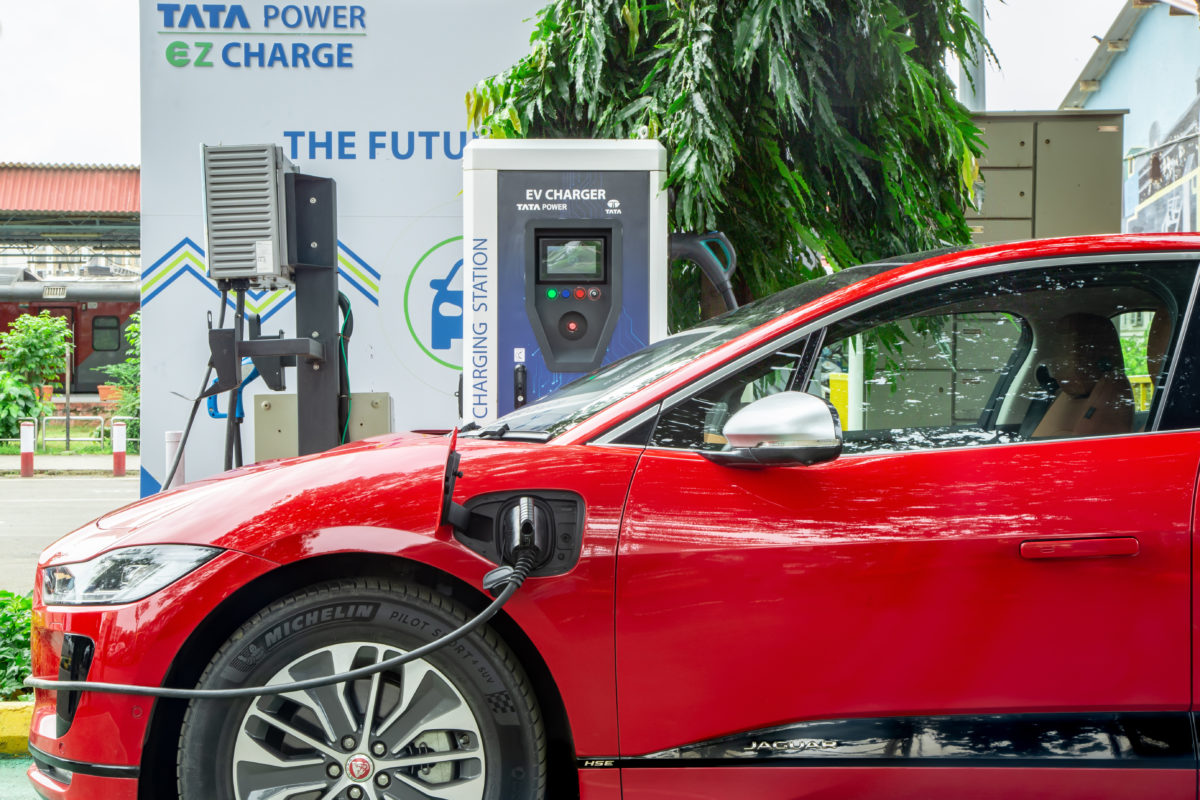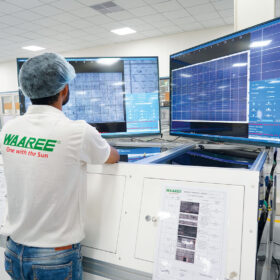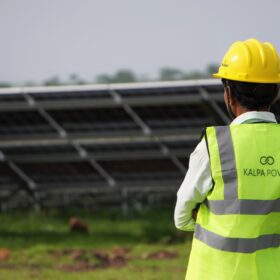With the right policy and charging infrastructure in place, just 3% of India’s 2032 wind and solar capacity targets under National Electricity Plan (NEP)-14 can power the nation’s entire electric vehicle (EV) fleet in that year—according to a new report by energy think tank Ember.
The report estimates that India will have 49 million EVs on the road by 2032, based on projections from the 20th Electric Power Survey of India. Charging this EV stock would require 27,000 GWh of electricity annually, considering standard estimates for energy efficiency (kWh/km) and distance travelled (km) in a year. This demand can be met through 15 GW of wind and solar capacity operating at a weighted average capacity utilization factor (CUF) of 21%. This is just around 3% of the wind and solar capacity target (486 GW) under NEP-14 for year 2032.
However, the study highlights that this would require measures to align EV charging with clean electricity availability.
“Today, most EV charging happens at homes in the evening and night, when fossil fuels dominate the power mix. Using measures such as Time-of-Day (ToD) tariffs while expanding public charging stations, especially at workplaces and commercial hubs, will enable more daytime charging and greater use of clean energy,” says Ruchita Shah, Energy Analyst at Ember.
States such as Assam, Bihar, Gujarat, Madhya Pradesh, Maharashtra, Odisha, Rajasthan and Tamil Nadu have already introduced solar-hour ToD tariffs for EVs. This report selected ten states for assessment, based on total EV sales in the fiscal year (FY) 2025, ensuring regional representation and recency of state EV policy. The selected states are Assam, Bihar, Gujarat, Karnataka, Madhya Pradesh, Maharashtra, Odisha, Rajasthan, Tamil Nadu and Uttar Pradesh.
The report also highlights the need to improve data collection on EV charging to improve planning.
“Establishing mechanisms to collect and aggregate EV charging data while ensuring user privacy can equip electricity distribution companies with critical insights to forecast EV-driven electricity demand and effectively operationalise ToD tariffs,” says Shah.
Further, the report showcases that EV charging can contribute as another option for grid flexibility, presenting a unique opportunity to support renewable energy integration.
Green tariffs can enable renewable energy-based EV charging via dedicated procurement by electricity distribution companies (DISCOMs). Several State Electricity Regulatory Commissions (SERCs) have notified such tariffs. However, these are not available for home charging, and the associated premiums will dissuade price-sensitive consumers.
“States with higher EV adoption can view the EV sector, among others, as a strategic lever to stimulate demand for clean electricity procurement. Both the centre and states are providing purchase incentives, which not only accelerate EV adoption but also hold potential to facilitate greater integration of renewable energy and will contribute to creating much-needed demand-side flexibility for the grid,” Shah added.
This content is protected by copyright and may not be reused. If you want to cooperate with us and would like to reuse some of our content, please contact: editors@pv-magazine.com.









By submitting this form you agree to pv magazine using your data for the purposes of publishing your comment.
Your personal data will only be disclosed or otherwise transmitted to third parties for the purposes of spam filtering or if this is necessary for technical maintenance of the website. Any other transfer to third parties will not take place unless this is justified on the basis of applicable data protection regulations or if pv magazine is legally obliged to do so.
You may revoke this consent at any time with effect for the future, in which case your personal data will be deleted immediately. Otherwise, your data will be deleted if pv magazine has processed your request or the purpose of data storage is fulfilled.
Further information on data privacy can be found in our Data Protection Policy.